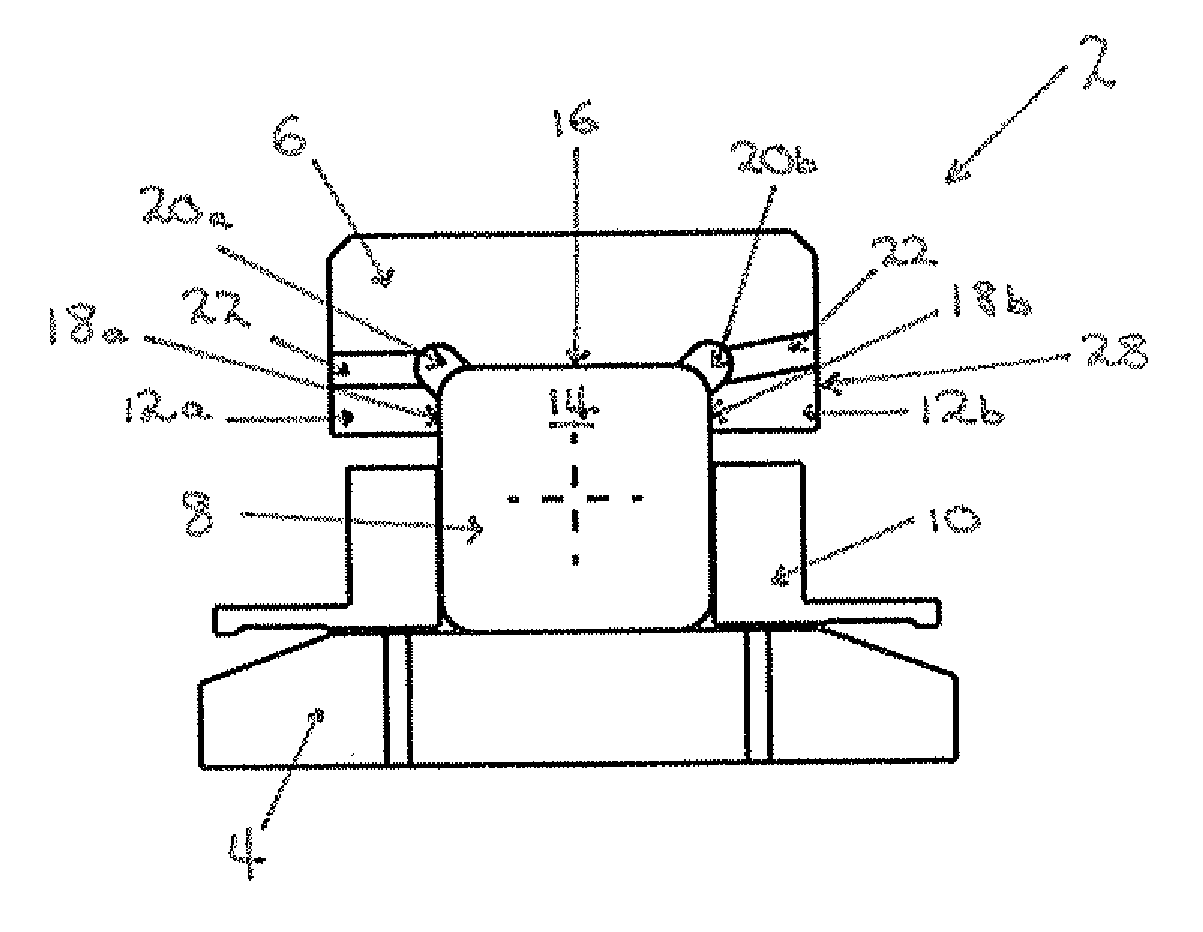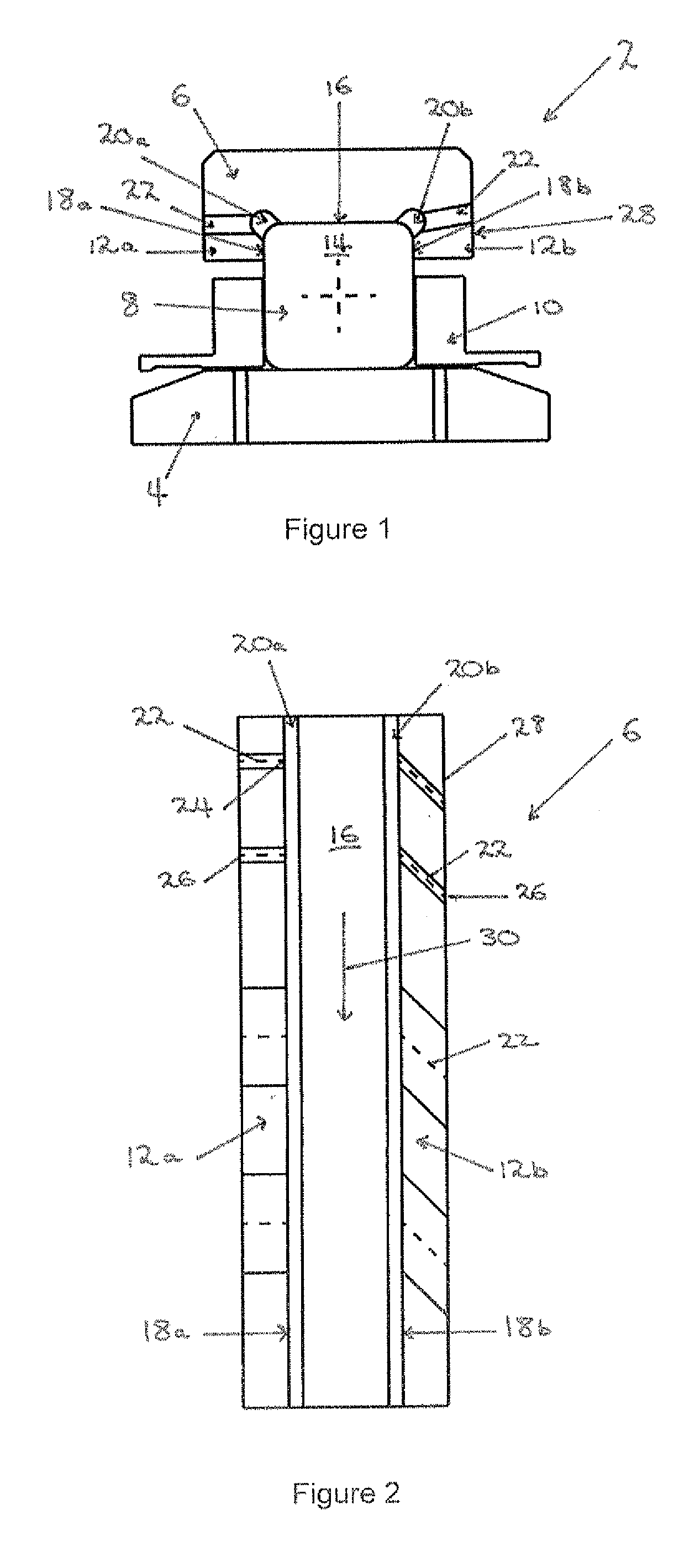Bearing race for a rolling-element bearing
a technology of rolling-element bearings and bearings, which is applied in the direction of roller bearings, mechanical equipment, engine components, etc., can solve the problems of increasing the drag on the cage, churning of oil, and cage slippage, so as to reduce the heat generation of oil pooling and churning, the minimum oil film thickness is minimised, and the bearing's tolerance to vibration is improved
- Summary
- Abstract
- Description
- Claims
- Application Information
AI Technical Summary
Benefits of technology
Problems solved by technology
Method used
Image
Examples
Embodiment Construction
[0031]With reference to FIG. 1, a rolling-element bearing 2 comprises an annular inner race 4 and an annular outer race 6. As described for a conventional bearing, the outer race 6 has a larger diameter than the inner race4 and the inner and outer races 4, 6 are concentrically arranged with the inner race 4 disposed within the outer race 6.
[0032]A plurality of rolling elements 8 (in this case, cylindrical rollers) are disposed between the inner and outer races 4, 6. The rolling elements 8 are located within openings in a circular cage 10. The rolling elements 8 are spaced apart from one another by the cage 10 and are allowed to rotate within the openings of the cage 10. The cage 10 is disposed between the inner and outer races 4, 6. Accordingly, the cage 10 spaces the rolling elements 8 around the circumference of the inner and outer races 4, 6.
[0033]The outer race 6 comprises first and second circumferential lips 12a, 12b. The first and second circumferential lips 12a, 12b are spac...
PUM
 Login to View More
Login to View More Abstract
Description
Claims
Application Information
 Login to View More
Login to View More - R&D
- Intellectual Property
- Life Sciences
- Materials
- Tech Scout
- Unparalleled Data Quality
- Higher Quality Content
- 60% Fewer Hallucinations
Browse by: Latest US Patents, China's latest patents, Technical Efficacy Thesaurus, Application Domain, Technology Topic, Popular Technical Reports.
© 2025 PatSnap. All rights reserved.Legal|Privacy policy|Modern Slavery Act Transparency Statement|Sitemap|About US| Contact US: help@patsnap.com


